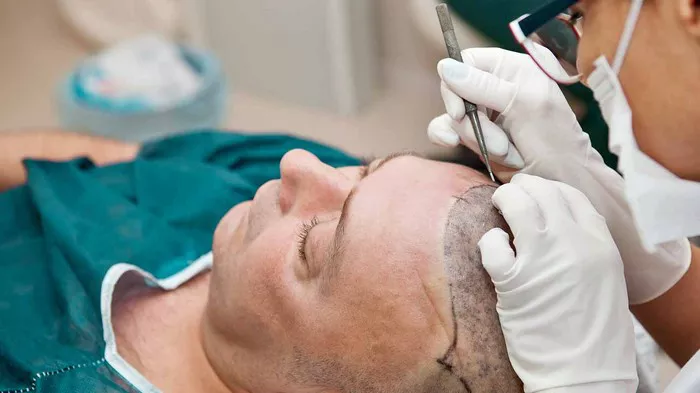A receding hairline is one of the most common types of hair loss, affecting both men and women. It can make the forehead appear larger and change the overall facial structure. If you’re considering a hair transplant, you might wonder: How many hair grafts are needed to restore a natural-looking hairline?
The number of grafts required depends on several factors, including the extent of hair loss, hair type, and the desired density. This article will explain in detail how many grafts you may need for a receding hairline and what to expect from the procedure.
What Is a Hair Graft?
A hair graft is a small piece of scalp tissue containing one or more hair follicles. Each graft can have anywhere from one to four hairs. These grafts are taken from a donor area, usually the back or sides of the scalp, where hair is more resistant to balding. The harvested grafts are then transplanted to the thinning or receding areas of the hairline.
How Many Grafts Are Needed for a Receding Hairline?
The number of grafts required to restore a receding hairline varies based on individual needs. However, a general estimate is:
Mild recession: 1000 to 1500 grafts
Moderate recession: 1500 to 2500 grafts
Severe recession: 2500 to 3500 grafts
The specific number depends on the shape of your hairline, the density you desire, and the quality of your donor hair.
Factors Affecting the Number of Grafts Needed
Extent of Hairline Recession
If only the temples are receding, fewer grafts may be needed.
If the entire frontal hairline has receded, more grafts will be required to create a balanced look.
Desired Density
Some patients prefer a lower-density, natural-looking hairline, while others want a denser appearance.
Higher density requires more grafts.
Hair Type and Thickness
Thick and curly hair provides better coverage with fewer grafts.
Fine and straight hair may require more grafts to achieve the same visual effect.
Head and Forehead Size
Larger foreheads may need more grafts to create a well-proportioned hairline.
Donor Hair Availability
The amount of hair available from the donor area limits how many grafts can be used.
How the Hair Transplant Procedure Works
Hair transplants for a receding hairline typically involve two main techniques:
1. Follicular Unit Extraction (FUE)
Individual hair grafts are extracted one by one from the donor area.
Leaves minimal scarring.
Takes longer but provides a more natural-looking result.
2. Follicular Unit Transplantation (FUT)
A strip of scalp is removed from the donor area, and hair follicles are extracted from it.
Allows for the transplantation of a large number of grafts in one session.
Leaves a linear scar on the back of the head.
Both techniques are effective, but FUE is more commonly used for hairline restoration due to its precision and minimal scarring.
What to Expect After the Procedure
Healing and Recovery
The transplanted area may have redness and scabbing for a few days.
The donor area will also take some time to heal.
Most patients return to work within a week.
Shedding Phase
Transplanted hair will shed within the first few weeks.
This is a normal part of the process.
Hair Growth Timeline
New hair starts growing around 3 to 4 months post-surgery.
By 6 months, visible improvements can be seen.
Full results take 12 to 18 months.
Can a Receding Hairline Be Restored Without a Transplant?
If your hairline is only slightly receding, you may consider non-surgical treatments:
Minoxidil (Rogaine): A topical solution that can slow hair loss and promote regrowth.
Finasteride (Propecia): An oral medication that helps prevent further hair loss.
PRP Therapy: Injections of platelet-rich plasma to stimulate hair growth.
However, these treatments work best in early-stage hair loss. A hair transplant is the most effective way to permanently restore a receding hairline.
Conclusion
The number of grafts needed for a receding hairline varies from 1000 to 3500, depending on the severity of hair loss and the desired density. A skilled surgeon will assess your hair loss pattern, donor area, and goals to determine the right number of grafts for you.
A hair transplant is a long-term solution that can restore a natural-looking hairline and boost confidence. If you’re considering the procedure, consult with a specialist to get a personalized treatment plan.
Related topics:
- How Many Times Can You Have Hair Transplant?
- Can You Lose Transplanted Hair?
- Which Clinic is Best for Hhair Transplant?


